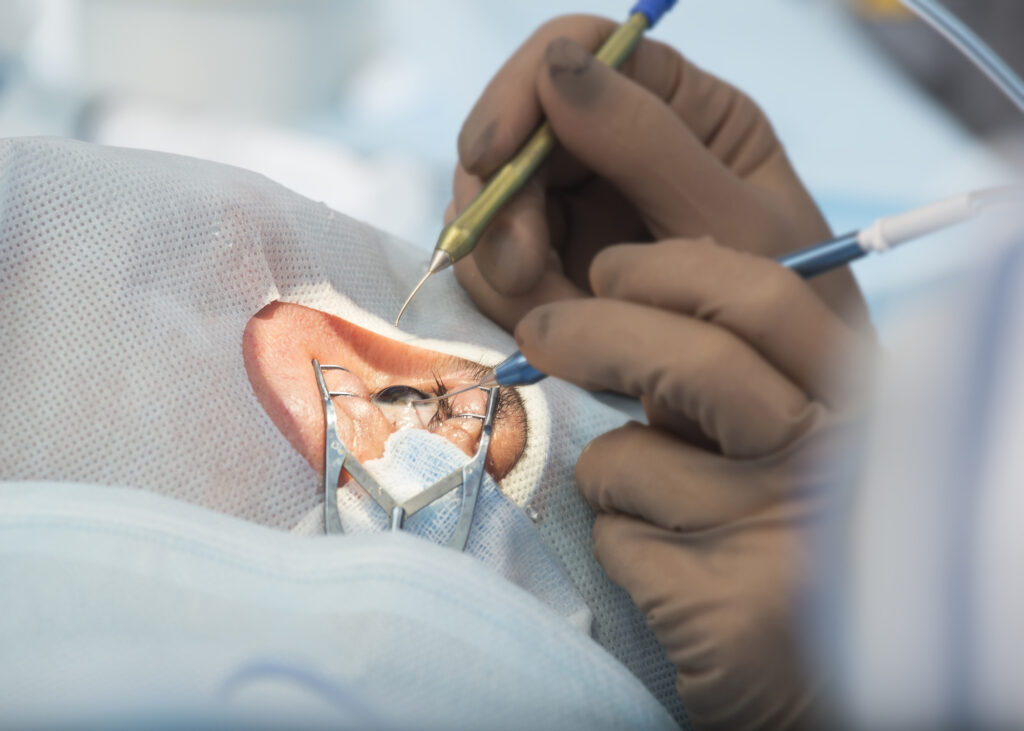Cataract eye surgery is one of the most common surgical procedures performed worldwide. Understanding the recovery process is critical for anyone considering this surgery or who has recently undergone it. In this article, we will explore the key aspects of cataract eye surgery, the recovery timeline, factors that can influence recovery, potential complications, and helpful tips for a smooth healing process.
Understanding Cataract Eye Surgery
Cataract eye surgery is designed to remove the cloudy lens of the eye, which impairs vision. The surgery typically involves replacing this lens with an artificial one. It’s a brief yet highly effective procedure that can help restore clear vision for many patients.
What is Cataract Eye Surgery?
Cataract surgery involves removing the natural lens of the eye that has become cloudy, usually due to aging. The most common technique used is phacoemulsification, where the lens is broken into small pieces and suctioned out. Once the lens is removed, an intraocular lens (IOL) is implanted in its place. The procedure generally takes less than an hour and is often done on an outpatient basis.
The Procedure of Cataract Eye Surgery
Before the surgery begins, patients are typically given sedation to help them relax. The surgeon will then create a small incision in the eye. Through this incision, ultrasound waves break up the cataract, allowing the cloudy lens to be removed easily. After removal, the artificial lens is inserted, restoring clarity to the patient’s vision.
Patients usually find the procedure to be straightforward and may even be awake during surgery, although they won’t feel any pain due to local anesthesia. Most patients notice an improvement in their vision almost immediately, though complete healing will take time.
Following the surgery, patients are often provided with detailed aftercare instructions to ensure optimal recovery. This may include using prescribed eye drops to prevent infection and reduce inflammation. It’s also common for patients to be advised to avoid strenuous activities and to wear sunglasses to protect their eyes from bright light and UV rays. Regular follow-up appointments with the ophthalmologist are crucial to monitor the healing process and to check the positioning of the new lens.
In addition to the physical aspects of recovery, many patients report a significant emotional uplift post-surgery. The ability to see clearly again can greatly enhance one’s quality of life, allowing individuals to engage in activities they may have avoided due to poor vision, such as reading, driving, or enjoying nature. The advancements in cataract surgery techniques, including the development of premium IOLs that can correct astigmatism or presbyopia, have further expanded the possibilities for patients, making the procedure not just a restoration of vision, but a pathway to a more vibrant and active lifestyle.

The Recovery Process After Cataract Eye Surgery
Post-surgery recovery involves two distinct phases: immediate care right after the procedure and long-term healing that can span several weeks to months. It’s essential for patients to follow their surgeon’s advice to ensure a successful recovery.
Immediate Post-Surgery Care
Immediately after surgery, patients are typically required to rest and may need help getting home. It’s essential to have someone accompany them, as vision may still be blurry. Following the surgery, patients are advised to use prescribed eye drops to prevent infection and manage inflammation.
Patients should also avoid activities that could strain their eyes, such as reading for long periods, watching TV, or using a computer. Initial discomfort may occur, and it’s not uncommon to experience sensitivity to light. Wearing sunglasses can help mitigate this. Additionally, patients should be cautious about rubbing their eyes, as this can disrupt the healing process and potentially lead to complications.
Long-Term Healing and Recovery
While most patients will experience a significant vision improvement within a day or two post-surgery, the complete healing process can take a few weeks. Most surgeons recommend regular follow-ups to monitor eye health and vision clarity. During this period, patients may need to avoid strenuous activities, swimming, or exposing the eye to irritants like dust and smoke.
It’s important for patients to stay in touch with their eye care professionals, particularly if they experience any unusual symptoms, such as increased pain or sudden changes in vision. Regular follow-ups help ensure that any potential issues are addressed promptly. Furthermore, patients should be aware that their vision may fluctuate during the healing process, which is a normal part of recovery. Engaging in gentle activities, such as short walks, can promote overall well-being and help maintain a positive mindset during this time. Learn more about healing on https://www.uc.edu/news/articles/2023/08/the-healing-power-of-nature.html
Nutrition also plays a vital role in recovery. A balanced diet rich in vitamins A, C, and E, as well as omega-3 fatty acids, can support eye health and healing. Foods such as leafy greens, carrots, and fatty fish are excellent choices. Staying hydrated is equally important, as it aids in overall recovery and helps maintain the moisture balance in the eyes. Patients should also consider discussing any supplements with their healthcare provider to ensure they are supporting their recovery effectively.
Factors Influencing Recovery Time
Recovery time after cataract surgery can vary widely among individuals. Several factors may influence how quickly a patient can return to their normal activities.

Age and Overall Health
Age plays a critical role in recovery time. Generally, younger patients may heal more quickly than older patients. Additionally, those with pre-existing health conditions, such as diabetes, may experience a longer healing period. Maintaining a healthy lifestyle pre- and post-surgery can facilitate a more rapid recovery. Engaging in regular physical activity, eating a balanced diet rich in vitamins and minerals, and managing stress levels can all contribute positively to the healing process. Furthermore, patients should be aware that their emotional state can also impact recovery; anxiety or depression may hinder the body’s ability to heal effectively.
Severity of the Cataract
The extent of the cataract itself can also affect recovery. Patients with more advanced cataracts may experience a longer surgery time and potentially more complications, leading to a longer recovery. In contrast, if the cataract is detected early, patients may encounter a quicker postoperative healing process. It is important for patients to have regular eye examinations to monitor their eye health and catch any issues early. This proactive approach can make a significant difference in the overall surgical experience and recovery time, as early intervention often leads to better outcomes.
Quality of Post-Surgery Care
Following the surgeon’s post-operative instructions can greatly influence recovery outcomes. Adhering strictly to the prescribed regimen for eye drops, attending follow-up visits, and avoiding certain activities as instructed can help ensure faster recovery and better visual outcomes. Additionally, having a support system in place can be invaluable during the recovery period. Family members or friends can assist with daily tasks, provide transportation to follow-up appointments, and help monitor the patient’s adherence to care instructions. Emotional support can also play a crucial role in the healing journey, as patients may feel more at ease knowing they have someone to rely on during their recovery process.
Potential Complications and Their Impact on Recovery Time
While cataract surgery is generally safe, complications can arise, which may extend recovery time. Understanding these potential issues is important for patients.
Common Complications of Cataract Surgery
Some common complications include infection, inflammation, and reoccurrence of cataracts, also known as secondary cataracts. In more severe cases, detachment of the retina may occur. Early detection and treatment of these complications are crucial, as they can significantly impact healing time and overall results. For instance, infections can lead to a condition known as endophthalmitis, which, although rare, can severely compromise vision and necessitate further surgical intervention. Additionally, inflammation can result in discomfort and blurred vision, prompting the need for anti-inflammatory medications to manage symptoms effectively. To read more about inflammation click here.
How Complications Can Extend Recovery Time
If complications do arise, the recovery process can be delayed. For instance, a serious infection will require additional treatments and possibly longer bed rest to allow for healing. Moreover, patients may experience a lag in visual recovery, making it crucial for surgical teams to be vigilant in monitoring and addressing any post-operative concerns promptly. The presence of inflammation can also lead to increased sensitivity to light, which might restrict a patient’s ability to engage in normal activities during the recovery phase. Furthermore, if secondary cataracts develop, patients may need to undergo a simple outpatient procedure called YAG laser capsulotomy, which, while typically quick, adds to the overall timeline of recovery and may require additional follow-up visits to ensure optimal results.
Tips for a Smooth Recovery
To ensure a smooth recovery process, patients can take several proactive steps before and after their cataract surgery.
Preparing Your Home for Recovery
Before surgery, it’s advisable to prepare the home environment. Moving commonly used items to eye level, ensuring good lighting, and creating a clutter-free space can reduce the risk of accidental injury post-surgery. Additionally, having someone available to assist with daily tasks during the immediate recovery period can be incredibly helpful. It’s also wise to stock up on necessary supplies, such as medications and eye drops, to avoid last-minute trips to the pharmacy. Consider preparing easy-to-make meals or arranging for meal delivery services to minimize the need for cooking during the initial recovery phase.
Lifestyle Changes to Aid Recovery
Implementing certain lifestyle changes can further enhance recovery. Staying hydrated, consuming a balanced diet rich in vitamins C and E, and avoiding smoking are beneficial. Getting ample rest and managing stress levels will also support a quicker healing process. Regularly incorporating foods such as leafy greens, nuts, and citrus fruits can provide essential nutrients that promote eye health. Engaging in gentle activities such as short walks can promote circulation and overall well-being. However, activities that strain the eyes or involve heavy lifting should be avoided until cleared by a healthcare provider.
Additionally, it’s important to follow the prescribed eye care regimen, which may include using antibiotic or anti-inflammatory eye drops. Patients should be vigilant about protecting their eyes from bright lights and dust, which can be irritating during the healing process. Wearing sunglasses when outdoors can shield the eyes from harmful UV rays and reduce glare, making the recovery experience more comfortable. Keeping follow-up appointments with the eye care professional is crucial to monitor healing progress and address any concerns promptly.
Other resources: Recovery Tips After Cataract Surgery Sydney
Comments are closed



